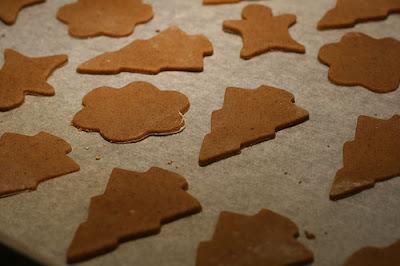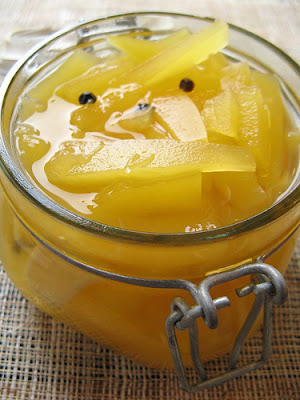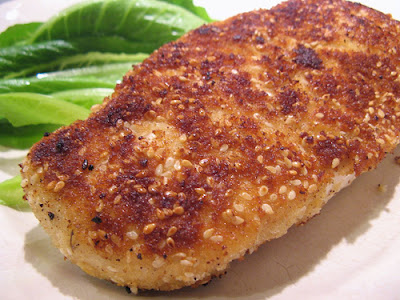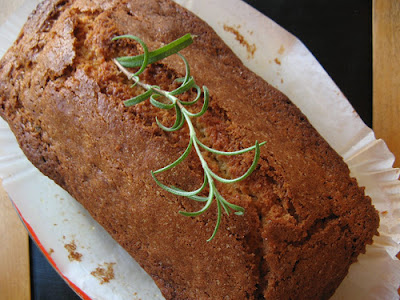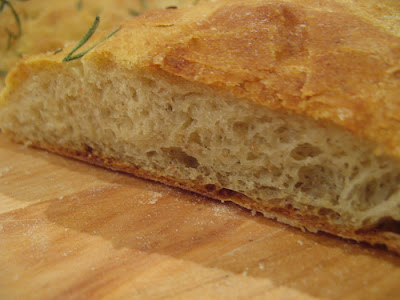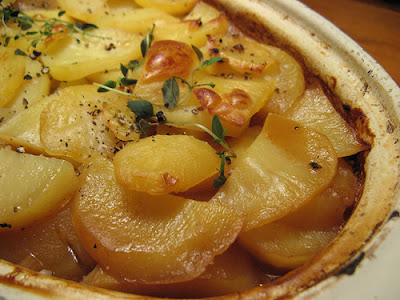Here's a list of dishes and drinks we enjoyed last night with appropriate English and Estonian language links (so I'd remember next year what to serve and what not to serve:)
Happy New Year, everyone!!! Head uut aastat!!!
Some eye-catching salmon roe and onion mouthfuls (sibulapaadid kalamarjaga; red onion, full-fat sour cream or creme fraiche, chopped red onion, salmon roe, dill, black pepper). One of the most popular nibbles on the table last night (and yes, although onion is strong-tasting, the creamy sour cream and salty salmon roe stole the show):

Two types of salami fingerfood - small squares with thyme (suitsuvorstisuupisted) and small rolls with slices of paprika (salaamikanapeed):

Kiluvõilevad aka rye bread toasts with butter, pickled Baltic herring, chopped green onions and grated boiled egg (my friend Erika and her family are currently living & working in Brussels, Belgium, so these über-Estonian nibbles were especially for them):

Of course there were Molly's bouchons au thon (tuunikalaomletikesed)- one of our favourite snacks from 2007:

There were two healthy salads on the table for those watching their weight: Russian Vinaigrette Salad (köögiviljavinegrett) and red and white cabbage coleslaw (ameerika kapsasalat):

Just before midnight we enjoyed K's modern take on the traditional Estonian Christmas meal - a canapé of black pudding, lingonberry jelly and roast potato:

And we had cheese, of course. There's an excellent local blue cheese now, Breti Blue (far back), and they also do a Brie-type cheese with caraway seeds (oozing on the front). We also had some lovely Mimolette (you can see a tiny glimpse of it down on the left) and Cathedral City Extra Mature Cheddar (front):
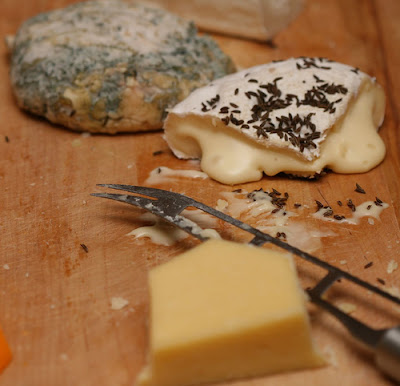
There were two main desserts - a gingerbread tiramisu, garnished with my current favourite berry, sea-buckthorn:

and
Pears poached in mulled wine (hõõgveinipirnid), garnished with toasted almonds (another hip-friendly dessert):

Both desserts were inspired by my recent internship at the top gourmet restaurant in Tallinn (story to follow). As making tiramisu for dessert left us with 8 egg whites, I made two types of meringues - coconut ones (kookosbeseed) and plain ones (beseeküpsised):

I also made Rosettes (krustaadid), using my long-neglected set of rosette irons:

Gingerbread baskets (piparkoogikorvikesed, using some leftover gingerbread dough) with lingonberry cream (curd cheese, whipping cream, sugar, vanilla and lingonberry jam), garnished with toasted hazelnuts:

For drinks? Kir Royals and Piña Colada Espumas, rooibos tea, Chinese cabernet sauvignon (Dragon Seal, 2005), South African Syrah (Simonsig Stellenbosch 2001), Cidre de Bouché de Normandie and much more..






